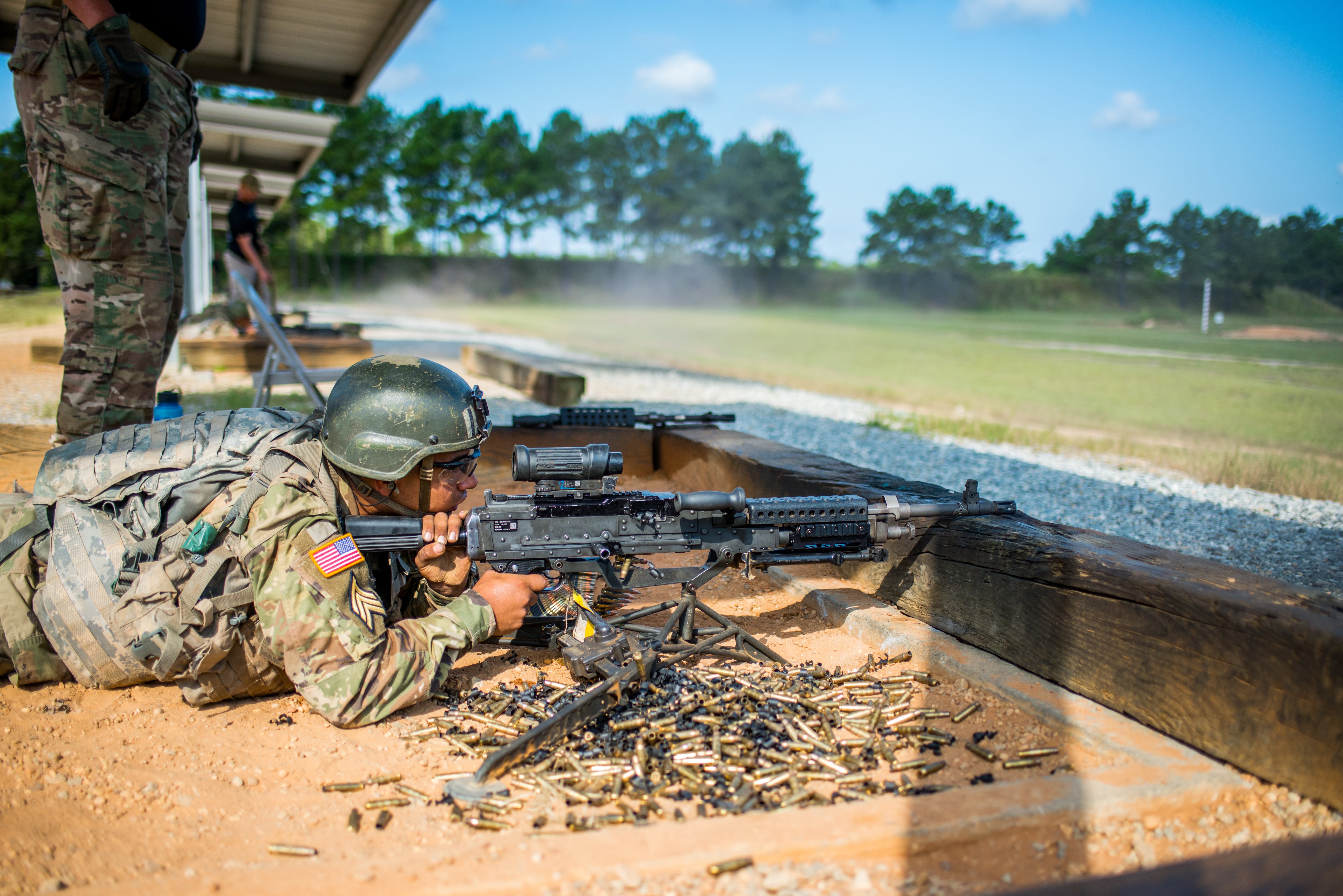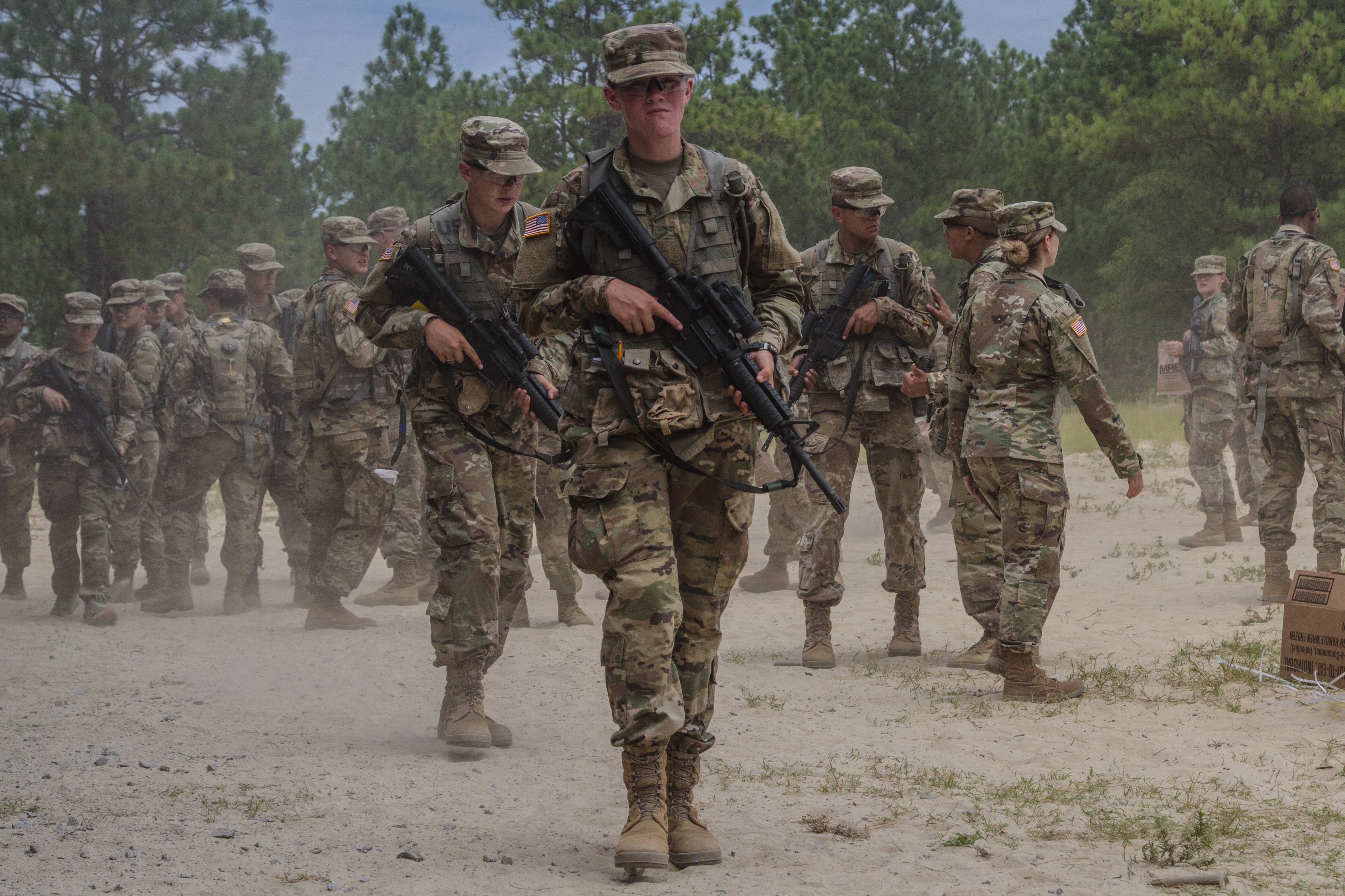The Army already plans to be over the end-strength projection it was shooting for this fiscal year, so leaders aren’t eager to set a new recruiting target until they see how things play out later in the spring, the service’s chief of staff said this week.
Not setting a recruiting target would help the service avoid the kind of negative attention it received when it failed to meet its goal of bringing 80,000 new soldiers into the force in 2018.
“People will focus on a number,” Gen. James McConville said during a press gaggle Tuesday. “If I tell you the number is 68,000 or 69,000 and I come back in April and I say ‘guess what, it’s 65,’ you’ll go, ‘you’re just lowering the bar because you couldn’t make it.’”
He stressed that recruiting rates are looking good this year, but the primary number that people should focus on is end-strength.
The Army recruited more than 68,000 soldiers last year, but after looking at the service’s intended end-strength of 478,000 soldiers, leaders realized that number could have been as low as 63,000. Still, that goes a long way in filling out the Army’s 2020 goals.
“We actually finished the year 5,000 over the end-strength that we wanted,” McConville added. “We’re well over the end-strength that we’re supposed to have, which is 480,000."
Army leaders have given recruiters preliminary goals in a range similar to last year. In April, the service will have a more refined number based on expected retention rates and other inputs that can impact force structure.
“We put a high number that has a buffer for anything that could go wrong, so to speak, but we’re going to make our end-strength. That is absolutely going to happen,” McConville said. “As we get closer, we may play with that number to ensure we don’t recruit too much. We don’t want to go over by too much because we have to pay salaries for people we may not need.”

If the recruiting numbers do go over the end-strength requirement, as they did last year, those new soldiers can be pushed into fiscal 2021 instead, he said.
The majority of recruiting gains are made in the last two months of the fiscal year anyway, the chief added. That’s when Army Recruiting Command is pushing hard to make its deadlines, and it lines up with the time of year students are graduating high school and looking for their next step in life.
Army leaders have repeatedly said that the goal is to reach an active-duty force of roughly 500,000 soldiers by the end of the decade, while cautioning that the numbers can fluctuate.
“I can’t tell you what the Army end-strength will be. I know it has to be above 500,000," the former Army secretary and current Secretary of Defense Mark Esper said in April 2019. “But our war games could come out and tell us – in two years, or a year and a half – that we really need 504,000. Or it could come out and tell us that we need 540,000.”
Growing the Army comes after a period of cuts during the Barrack Obama administration. The active duty component ballooned to nearly 570,000 by 2012 to match the need for soldiers during the preceding surge years in Iraq and Afghanistan. After 2012, the service made progressive cuts to its active duty force structure until the Donald Trump administration reversed the trend.
The ground branch is facing a few factors that “pull the future size and shape of the Army," according to Mark F. Cancian, a senior adviser at the Center for Strategic and International Studies.
“One is the guidance in the NDS to focus on great power conflicts with Russia and China. That implies a force equipped with advanced, and likely very expensive, technologies paid for, if necessary, by cuts to structure,” Cancian wrote in an October analysis.
“Another is the day-to-day demand for forces to deploy to Afghanistan, Europe, and elsewhere. That implies a larger force that may not need the most advanced technologies," he noted. "Finally, difficulties in recruiting and retention, as described earlier, may drive force size regardless of strategy.”
The Army provides roughly 60 percent of the forces required of U.S. Central Command, and indeed the casualties from ongoing battles in Afghanistan reflect the high burden placed on soldiers. More than 30,000 soldiers are tasked to the Middle East, about 8,000 are divvied out to NATO operations and the European Deterrence Initiative and another 17,000 soldiers are meted out to the Korean Peninsula, according to Senate Armed Services testimony from March 2019.
Kyle Rempfer was an editor and reporter who has covered combat operations, criminal cases, foreign military assistance and training accidents. Before entering journalism, Kyle served in U.S. Air Force Special Tactics and deployed in 2014 to Paktika Province, Afghanistan, and Baghdad, Iraq.
